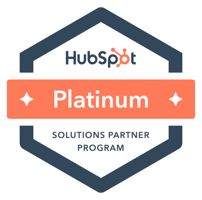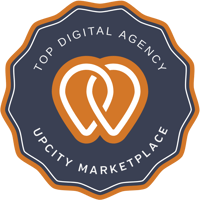Let's dig into some facts and figures, and learn more about how to make your sales enablement dollars really count.
Sales Enablement Spending Trends
Recently, companies have doubled down on sales enablement initiatives in a big way. For instance, annual spending on sales enablement and training now exceeds $66 billion across a range of industries. That's not chump change by any stretch of the imagination!
In the United States, corporate leaders are continuing to invest large amounts of time and money in sales enablement programs. And they plan to invest even more in the future. One study found that 60% of American business owners plan to increase their sales enablement budgets year over year. Moreover, well over 59% of business organizations have a dedicated sales enablement strategy in place.

How Much are Companies Actually Spending?
Traditionally, a typical marketing budget for an enterprise-level organization came out to approximately 10% of company revenue. However, a 2017 Gartner study showed a rise in average marketing budget — up to 12%. (Larger, richer companies can spend as much as 13% of their total budget on marketing.) Of course, the economy has had its ups and downs since this study came out; however, a range of 10-12% for the total marketing budget stands as a helpful benchmark across most industries.
What about the percentage of their marketing budget that companies specifically allocate to sales enablement? Another study, conducted in 2019, found that 66% of participating businesses spend at least $150 per user/per month on sales enablement tools. A dramatic increase from a similar survey performed in 2017. In addition, companies have to pay costs around onboarding, training, platform management, and other sales enablement functions.
Challenges to Spending Wisely
It's virtually undisputed that sales enablement, when done right, packs a powerful punch in terms of your sales team's efficiency, their success rate, and your company's bottom line. That being said, effective sales enablement spending requires some careful planning beforehand. And there are many challenges that could result in higher costs and a lower ROI. These include:
A disconnect between your marketing and sales departments.
According to research, a whopping 90% of marketing-produced content goes unused by sales; and only 9% of marketing content gets used more than five times. One key factor that contributes to these numbers is the existence of a "disconnect" between marketing and sales. The marketing team doesn't understand what kind of content sales reps need in order to close deals, and the sales reps aren't willing to use the available content in their interactions or provide constructive feedback on how marketing can improve.
Lack of a centralized content database.
Many companies have multiple content libraries in their system, each one located on a different platform. This is not only confusing but makes it difficult for sales reps to quickly locate relevant, valuable content for their prospects.
"Renegade reps."
Because so many salespeople are unhappy with the content given them by the marketing team, you'll often hear about "renegade reps." In order words, reps that "go rogue" and create their own content for conversations with leads. In fact, one study indicated that dissatisfied sales reps create an incredible 40% of all enterprise content!

How to Spend Wisely... and Justify the ROI
At this point, you may be wondering: "With all of these obstacles in play, how exactly can I 'make my blows count' in terms of sales enablement spending?" There are 3 keys that can help:
- Make your reps aware of all the marketing-produced content available to them, and how they can access it.
- Analyze which pieces of content are presented to which prospects, and how they perform compared to expectations and/or similar pieces of content.
- Continually and consistently invite feedback from your sales reps on which types of content work and which types don't. Their experience "in the field" can deliver invaluable insights to your marketing team for the development of more effective content.
Apart from refining your spending strategy, at some point, you may also need to justify the ROI of sales enablement to your company's senior management or board of directors. If so, remember to justify your budget with concrete numbers, proven analytics, and relevant KPIs. Here are just a few KPIs to consider:
Quota Attainment.
If your reps are consistently meeting their quotas, it indicates that your team is buying into your sales enablement efforts.
Time To Quota (TTQ).
This spotlights your new hires in particular. If they are meeting their quotas more quickly than before you implemented your sales enablement process, then you know you're doing something right.
Time Spent Selling.
An effective sales enablement process empowers reps to spend less time searching for resources, and more time interacting with potential customers. This should be reflected in the amount of time they spend actually selling.
Conversion Rate.
This is the bottom-line metric for sales enablement. If you're doing it right, your conversion rate should trend upwards — maybe even soar!
Take advantage of our free Hubspot CRM Configuration to start modernizing your sales process. This is a limited-time offer where we will design a sales pipeline specifically for your business. Start generating more revenue and improve your close rates by building your first high-performing sales pipeline on HubSpot at no cost. Simply schedule a discovery session with our team of HubSpot experts.
Of course, there's no magic number in terms of how much a company needs to spend on sales enablement. Each business is unique, and has unique objectives and circumstances — and any sales enablement strategy should take those factors into account. If you'd like to learn more about how to determine your "sweet spot" for sales enablement spend, reach out to our team at OverGo Studio today for a free consultation. We'd be happy to answer any questions you have!


